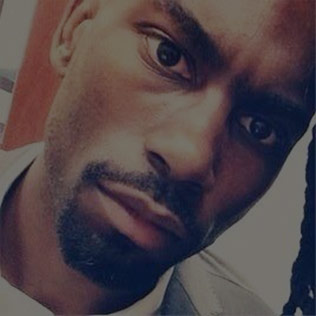DeRay Mckesson believes social media highlights stories that otherwise would go unnoticed.
“We can live in a world where police do not kill
people. That is a real expectation, a valid expectation, and we can
actually create a world where that is true.”

DeRay Mckesson
30, Baltimore
Before August 9, DeRay Mckesson was
making a decent living as a senior administrator for the Minneapolis
Public Schools. A week after seeing images of Michael Brown’s body
flooding his Twitter feed, he jumped in his car to make the nine-hour
drive to Ferguson, Missouri. The next night he was tear-gassed by police
on West Florissant Avenue. “I thought, ‘this is not the America I
know,’ ” he says. “ ‘This is not what America should be.’ ” Mckesson
became a full-time protester after quitting his day job in March and is
now one of the most prominent voices of the movement, someone who can
set off a trending hashtag with one resonant tweet. He appears regularly
on TV news shows (including on CNN) and pens op-eds for national media
outlets. He sat next to presidential candidate Rick Santorum
at a memorial for the victims of the Charleston church massacre and was
among the VIP guests invited to the launch of Hillary Clinton’s
presidential campaign. His profile also has made him a regular target of
online trolls, death threats and critics such as Fox News anchor Sean
Hannity, who called him a "professional protester" who is just out "to
get paid," and Montel Williams, who says, “he’s no MLK.” In response,
the King Center has called Mckesson “a man of consciousness whose life
is threatened daily because of his activism.”
Mckesson uses social media to share news related to police-involved deaths, from photos and videos to police reports and court records. He believes social media can “highlight stories that otherwise would have gotten no visibility” and allows the movement to speak with more “immediacy and regularity” than previous civil rights struggles. As soon as Mckesson arrived in Ferguson, he began using Instagram and Twitter to share images of protests, information about rallies and resources for protesters. He also started the Ferguson Protest Newsletter to share news about campaigns, demonstrations, petitions and updates on Officer Darren Wilson's case. The newsletter eventually shifted focus to police-involved deaths and actions nationwide, growing into We The Protesters, a hub that includes activist toolkits and stats related to police violence. Mckesson has returned to Ferguson for other protests and has visited Baltimore, Charleston and New York to document rallies and assist in organizing. “Either the story is never told,” he says, “or it’s told by everybody but us.”
Mckesson uses social media to share news related to police-involved deaths, from photos and videos to police reports and court records. He believes social media can “highlight stories that otherwise would have gotten no visibility” and allows the movement to speak with more “immediacy and regularity” than previous civil rights struggles. As soon as Mckesson arrived in Ferguson, he began using Instagram and Twitter to share images of protests, information about rallies and resources for protesters. He also started the Ferguson Protest Newsletter to share news about campaigns, demonstrations, petitions and updates on Officer Darren Wilson's case. The newsletter eventually shifted focus to police-involved deaths and actions nationwide, growing into We The Protesters, a hub that includes activist toolkits and stats related to police violence. Mckesson has returned to Ferguson for other protests and has visited Baltimore, Charleston and New York to document rallies and assist in organizing. “Either the story is never told,” he says, “or it’s told by everybody but us.”

No comments:
Post a Comment